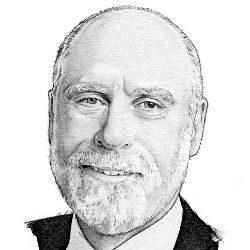
The second Heidelberg Laureate Forum (HLF) has just ended. Taking place annually in this historic city, this conference was even better than the first, if that is possible.
The primary mover, Klaus Tschira (a founder of the German software firm SAP), has again generously supported this weeklong event through his personal foundation. ACM (Turing Award), the International Mathematics Union (Fields Medal and Nevanlinna Prize) and the Norwegian Academy of Science and Letters (Abel Prize) are additional sponsors and organize the selection of the 200 young researchers who join the laureates for the week. There were plenty of opportunities for formal lectures and informal small group gatherings to link the 100 mathematics and 100 computer science researchers to each other and the laureates in attendance. The HLF staff provided superb planning, operational and logistical support throughout this event, adapting in real time to suggestions for improvement.
It would be difficult to overstate the energy levels reached at this event. If we had been arranged in a circle, we might have outdone the Large Hadron Collider at CERN! As usual, I learned many new things from both the mathematicians and the computer scientists. While I have only limited space in this column, I would like to share some of the interesting surprises that came my way.
Ivan Sutherland was in attendance again this year and while discussing computer architecture using asynchronous circuits, he told me about a very interesting idea that has implications for improving software safety. We all know a register of N bits has 2N values, 0–2N–1. Right? Wrong! Turns out, as Ivan grinningly reported, there is another value, "empty." That is, if nothing has been stored in the register, the hardware should produce an exception to any attempt to make use of the (non)value in that register. Flagging such an event should reduce the incidence of using the contents of an uninitiated register that could lead to any of a variety of bad effects. This begs the question, "When does the ’empty’ flag get set?" It is obvious that it must be reset when something is stored in the register. One might set the bit when a "new" register is created in a push-down stack, for instance. Or when memory is returned to the "free pool" in a garbage-collecting system. When a register is popped off the push-down stack it should be treated as empty of any value. This idea reinforces the more general sense that safety and security of programs might be improved by creating a partnership in the form of hardware-reinforced security or safety measures.
Leslie Lamport, recipient of the 2013 Turing award, gave one of the lectures. He spoke eloquently on the topic of proofs (not just of program correctness but of any proofs). He made a strong and vivid case for changing from the 17th-century style of narrative proofs to a 21st-century style in which it is clear at each step what precedents are being invoked for each step in the proof. The use of a terse symbolic representation versus a narrative made the basis for each assertion far more apparent.
John Hopcroft gave an example-rich talk illustrating how different his lectures on computer science are today compared to only 15 years ago. Today, he is far more focused on reasoning and computing in high-dimensionality data rather than operating systems, programming languages, and data structures. What completely surprised me was the reasoning that leads to the conclusion that the unit sphere in extremely high-dimensionality spaces has vanishing volume. There were surprises like this laced throughout an entertaining but very thought-provoking examination of the modern computer science curriculum as he sees it.
A visit to the European Molecular Biology Laboratory (EMBL) on the outskirts of Heidelberg proved to be very stimulating. Surrounded by energetic and thoughtful mathematics and computer science graduates, post-docs, and junior faculty, we heard a remarkable lecture about what is known about the complex operation of cells and the particularly interesting way in which microtubules are used to guide the transport of complex biochemicals within the cell. Computational biology was "in the air" at EMBL and the HLF. If anything stood out for me, it was the increasing role of computing and mathematics in diverse subjects including astrophysics, biochemistry, and mathematical topology among so many other modern interests.
The Heidelberg Laureate Forum is one of the best new activities in which ACM is engaged and I predict it will become a strong and new tradition among the many ways in which ACM contributes to and reinforces the importance of computing in our society.



Join the Discussion (0)
Become a Member or Sign In to Post a Comment